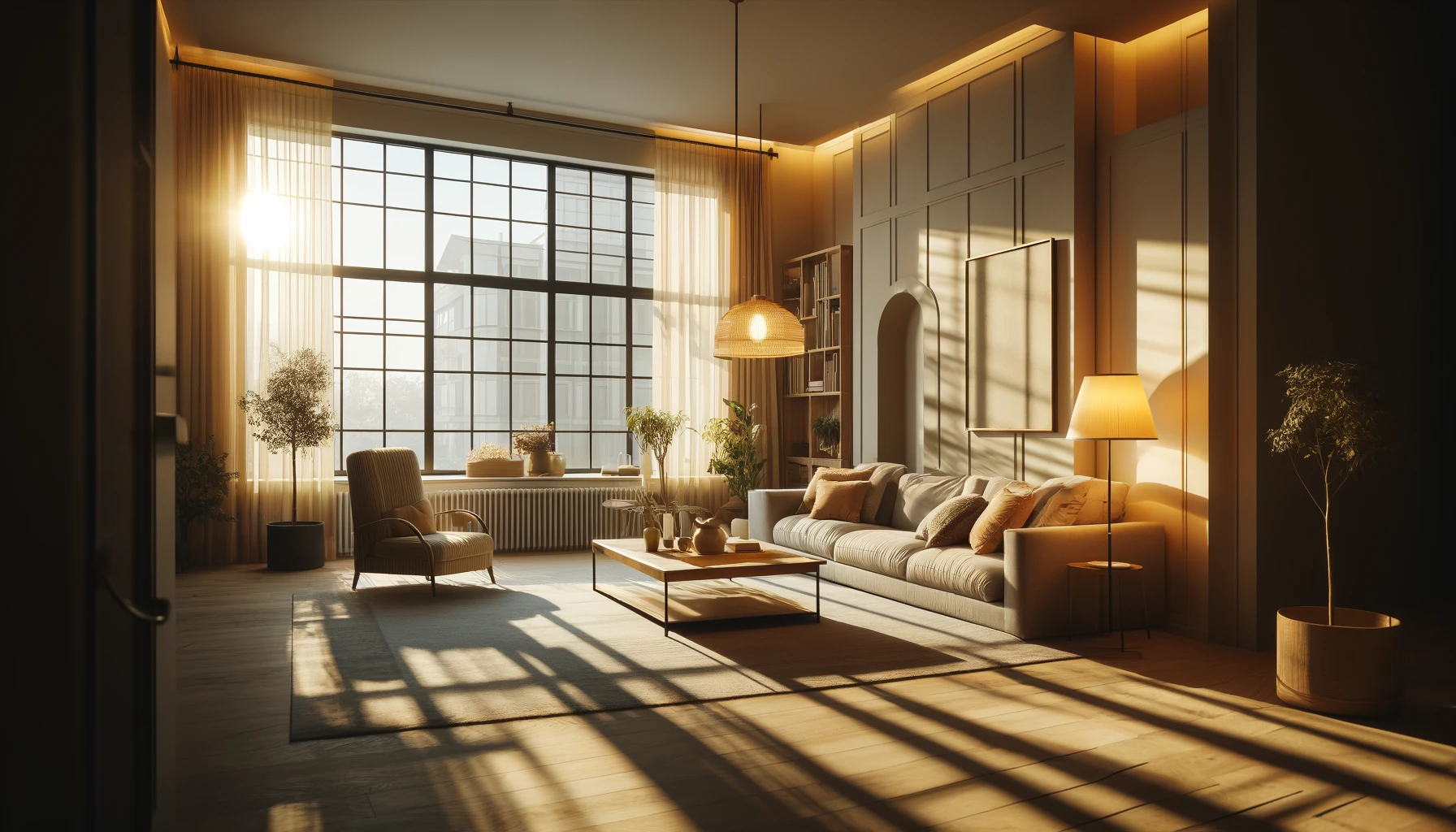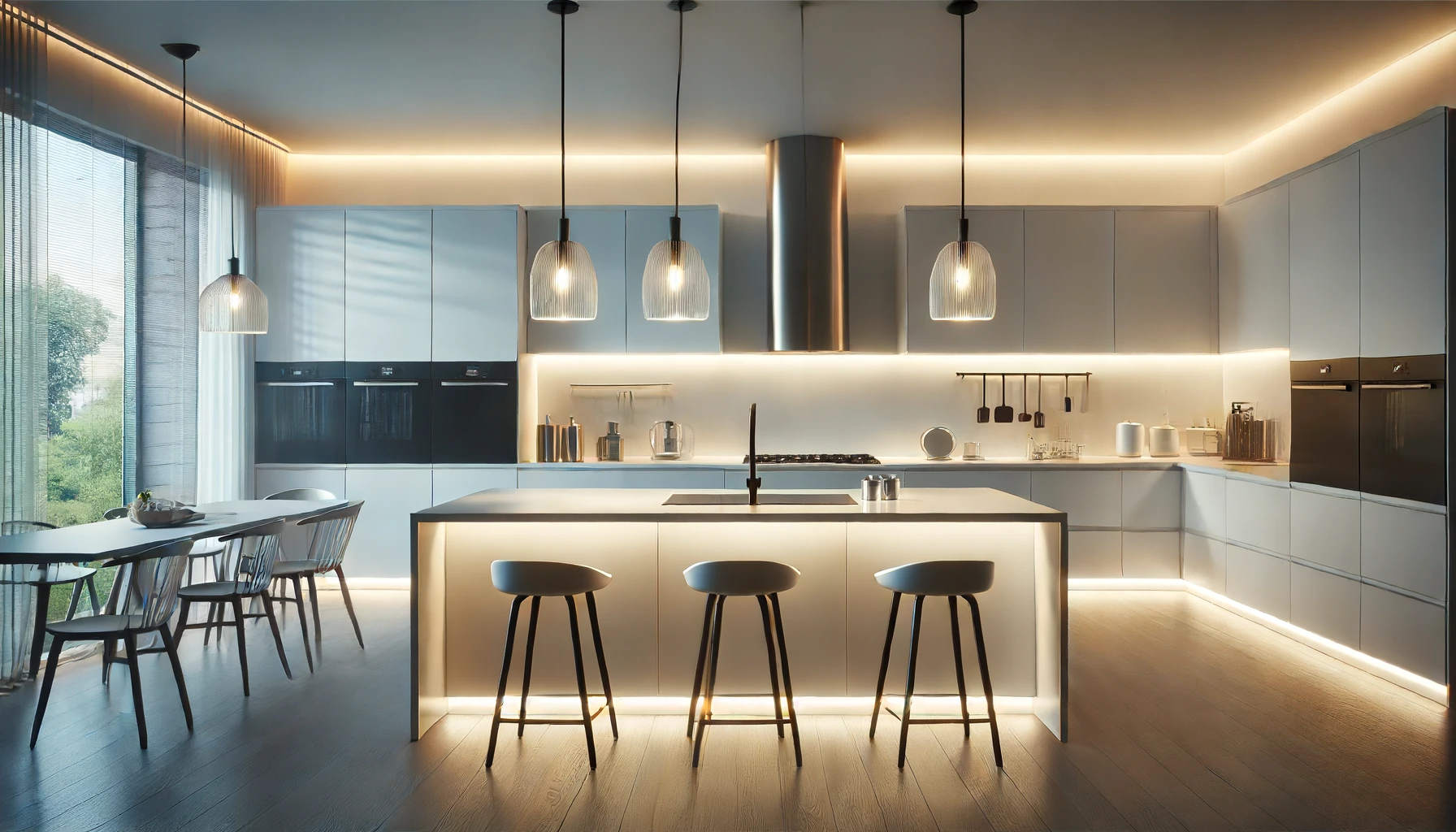
How to Prompt Lighting in DALL-E to Create a Photorealistic Interior Design: A Comprehensive Guide
How to Prompt Lighting in DALL-E to Create a Photorealistic Interior Design: A Comprehensive Guide
10 Tips on DALL-E Prompting for Photorealistic Interior Design: Elevate Your AI-Generated Images
Best Platforms to Find Interior Design Products
10 Best Interior Design Tools And Their Key Features
10 Essential Software for Interior Designers
Introduction
Creating photorealistic interior designs using AI tools like DALL-E requires a precise approach, especially regarding lighting. Correctly describing lighting can significantly enhance your designs' realism and visual appeal. This article provides detailed guidance on effectively prompt lighting in DALL-E, ensuring your interior designs are both lifelike and captivating.
Lighting plays a crucial role in creating photorealistic interior designs, and using tools like DALLE can help achieve stunning results. When working on these projects, consider how lighting interacts with other elements, such as the textures in cozy interiors or the overall design of hotel guestrooms.
Outline |
|---|
1. Understanding DALL-E and Its Capabilities |
2. The Importance of Lighting in Photorealistic Design |
3. Types of Lighting in Interior Design |
4. Crafting Effective Lighting Prompts for DALL-E |
5. Describing Natural Light in Prompts |
6. Specifying Artificial Lighting in Prompts |
7. Using Shadows and Highlights for Realism |
8. Incorporating Color Temperature in Prompts |
9. Layering Light for Depth and Dimension |
10. Avoiding Common Lighting Mistakes in Prompts |
11. Case Studies: Successful Lighting Prompts with DALL-E |
12. Enhancing Prompts with Descriptive Language |
13. Tools and Resources for Lighting Descriptions |
14. Future Trends in AI-Driven Interior Design |
15. Conclusion |
16. FAQs |
Understanding DALL-E and Its Capabilities
DALL-E, an AI model developed by OpenAI, generates images from textual descriptions. By leveraging its advanced capabilities, designers can create photorealistic interior designs. Understanding DALL-E's potential is the first step in crafting effective prompts.
The Importance of Lighting in Photorealistic Design
Lighting is crucial in achieving photorealism in interior design. It affects how colours are perceived, creates shadows and highlights, and sets the mood of a space. Properly described lighting can transform a simple design into a visually stunning masterpiece.
Types of Lighting in Interior Design
Ambient Lighting
Ambient lighting provides the general illumination of a space. It’s the base layer of light that ensures overall visibility and comfort.
Task Lighting
Task lighting focuses on areas where activities are performed, such as reading, cooking, or working. It is usually brighter and more concentrated.
Accent Lighting
Accent lighting highlights particular features or objects within a room, adding depth and emphasis to the design.
Crafting Effective Lighting Prompts for DALL-E
Clarity and Specificity
When crafting prompts for DALL-E, clarity and specificity are key. Describe the type of lighting, its source, and its effect on the environment. For example, “soft, warm ambient lighting from recessed ceiling lights.”
Descriptive Language
Use descriptive language to convey the desired lighting effect. Phrases like “soft glow,” “bright and focused,” or “subtle highlights” help DALL-E generate more accurate and realistic images.
Describing Natural Light in Prompts
Direction and Source
Specify the direction and source of natural light. For example, “morning sunlight streaming through east-facing windows.”
Intensity and Time of Day
Include details about the intensity and time of day to enhance realism. For example, “gentle afternoon light casting long shadows.”
Specifying Artificial Lighting in Prompts
Types of Light Fixtures
Describe the light fixtures, such as chandeliers, pendant lights, or floor lamps. Mentioning the style and material of the fixtures can add to the visual detail.
Light Sources
Specify the light sources, such as LEDs, incandescent bulbs, or halogen lights. Each type has unique characteristics that affect the overall lighting.
Using Shadows and Highlights for Realism
Shadow Description
Detail the direction, length, and softness of shadows. For example, “soft shadows cast by a table lamp on the wall.”
Highlight Effects
Describe how highlights interact with surfaces. For example, “bright highlights on the glossy countertop.”
Incorporating Color Temperature in Prompts
Warm vs. Cool Lighting
Specify the colour temperature to set the mood. Warm lighting (2000K-3000K) creates a cosy feel, while excellent lighting (5000K-6500K) offers a modern and energetic vibe.
Detailed Descriptions
Use phrases like “warm yellow glow” or “cool white light” to guide DALL-E in generating the correct lighting ambience.
Layering Light for Depth and Dimension
Combining Lighting Types
Describe how different types of lighting work together. For example, “ambient lighting from ceiling lights combined with task lighting from under-cabinet LEDs.”
Creating Depth
Detail how light layers create depth. For example, “soft ambient lighting with bright task lighting highlights specific areas.”
Avoiding Common Lighting Mistakes in Prompts
Overexposure
Avoid overexposure by balancing light sources. Specify the intensity of each light source to prevent overly bright areas.
Inconsistent Lighting
Ensure consistency in lighting descriptions to avoid disjointed and unrealistic designs. Consistent lighting creates a cohesive and believable environment.
Case Studies: Successful Lighting Prompts with DALL-E
Residential Living Room
Prompt: “A cosy living room with natural light streaming through large west-facing windows in the afternoon, creating warm, long shadows. Soft ambient lighting from recessed ceiling lights and a floor lamp with a warm yellow glow next to the reading chair.”

Modern Kitchen
Prompt: “A sleek, modern kitchen with bright, cool white task lighting from under-cabinet LEDs. Pendant lights with a warm glow hang above the island, creating a balanced mix of cool and warm lighting.”

Enhancing Prompts with Descriptive Language
Using Adjectives
Incorporate adjectives to add richness to your prompts. For example, “soft, diffused morning light” or “crisp, bright task lighting.”
Detailing Light Interactions
Describe how light interacts with objects. For example, “soft light reflecting off the polished wooden floor.”
Tools and Resources for Lighting Descriptions
Lighting Design Software
Software like DIALux and Relux can help visualize and describe lighting scenarios accurately.
Online Resources
Websites and forums dedicated to interior design and lighting can provide inspiration and examples for crafting effective prompts.
Future Trends in AI-Driven Interior Design
Smart Lighting
Integrating smart lighting systems offers customizable and adaptive lighting solutions, enhancing the realism in AI-generated designs.
Sustainable Lighting
Eco-friendly lighting options, such as energy-efficient and solar-powered LEDs, are becoming increasingly popular. Highlighting sustainable choices can enhance the appeal of your designs.
Conclusion
Effective lighting prompting in DALL-E is essential for creating photorealistic interior designs. By understanding the types of lighting, using descriptive language, and incorporating modern tools and techniques, designers can achieve stunning and realistic results. As technology evolves, staying updated with the latest trends and ethical considerations will ensure your designs remain relevant and impactful.
FAQs
How does lighting affect the mood of an interior space?
Lighting affects the mood by influencing the ambience and atmosphere. Warm lighting creates a cosy feel, while cool lighting offers a modern and energetic vibe.
What are some common mistakes to avoid in lighting prompts for DALL-E?
Common mistakes include overexposure, inconsistent lighting descriptions, and neglecting the balance between natural and artificial light.
How can AI help in simulating lighting for interior design?
AI tools like DALL-E can simulate realistic lighting scenarios, allowing designers to visualize and refine their lighting setups before implementation.
What is the role of shadows and highlights in photorealistic designs?
Shadows and highlights add depth and realism, making designs appear more lifelike. Describing their interaction with objects and surfaces is key to photorealism.
Why is colour temperature critical in lighting design?
Colour temperature affects the perception of space, influencing its mood and ambience. Describing the specific colour temperature helps in achieving the intended effect.
What tools can be used for visualizing lighting in interior design?
Popular tools include DIALux, Relux, and SketchUp, which offer advanced lighting simulation and visualization features.
Further Read:
10 Tips on DALL-E Prompting for Photorealistic Interior Design: Elevate Your AI-Generated Images
21 Affordable Italian Furniture Brands for Commercial and Contract Projects
How to Design a Restaurant Booth: Dimensions, Layout, Details, and Mistakes to Avoid
Best Platforms to Find Interior Design Products
How to Choose Flooring Tiles for Your Bathroom: A Professional Guide
Criteria to Choose the Right Sofa: A Professional Guide for Interior Designers
12 Most Used Interior Design Websites
How to Find Furniture from a Photo
10 Best Interior Design Tools And Their Key Features